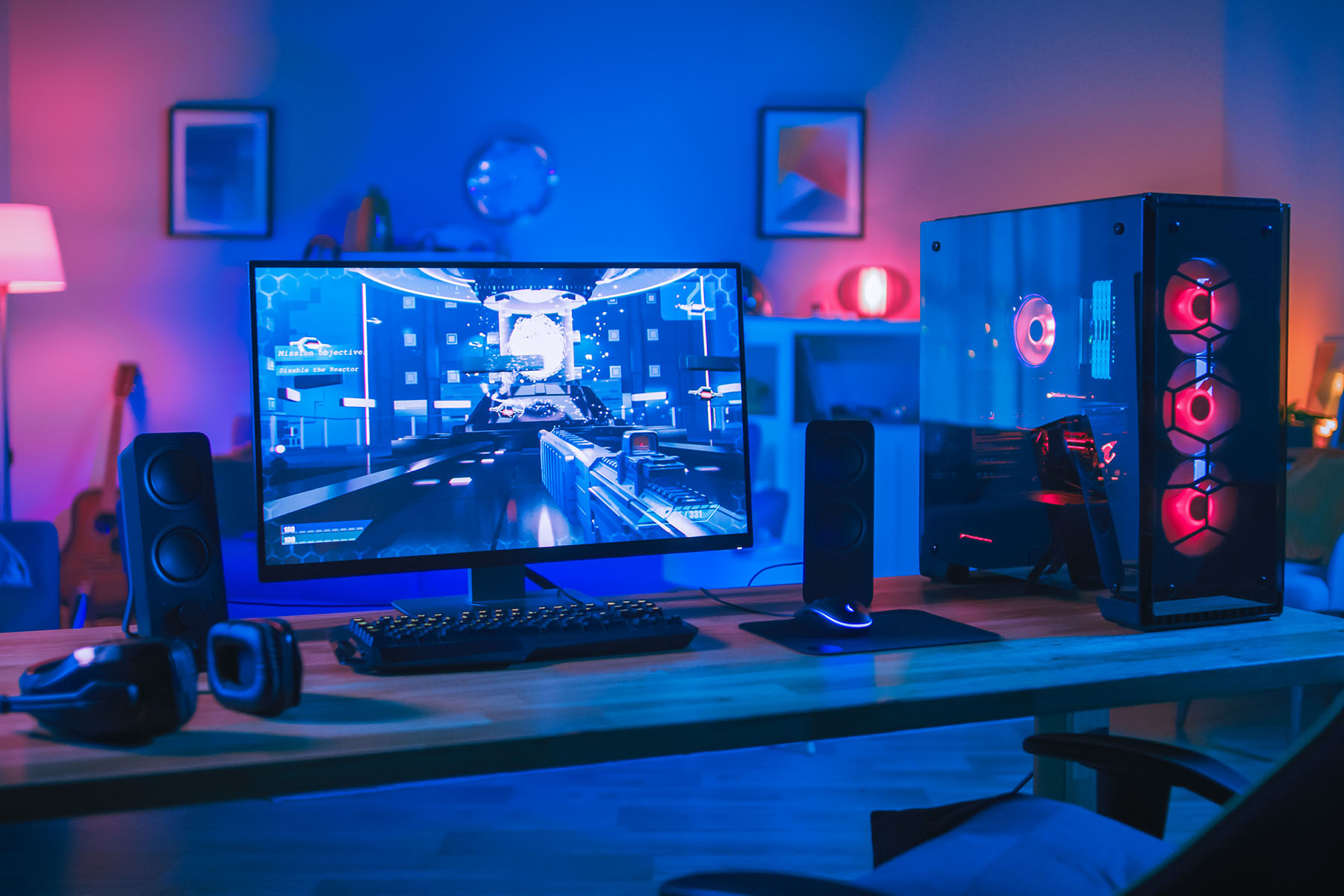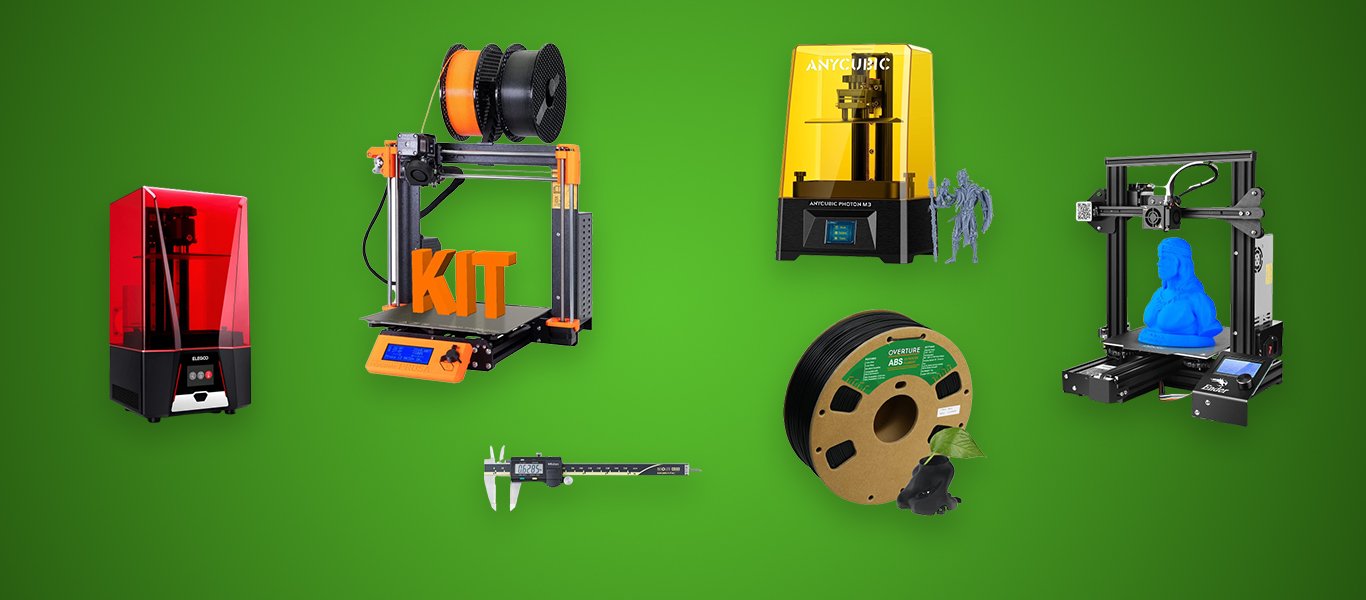Introduction
Welcome to the world of HDMI dummy plugs! In today’s digital age, HDMI (High-Definition Multimedia Interface) technology has become a standard for high-quality audio and video transmission between devices. Whether you’re a techie or a casual user, you may have come across the term “dummy plug” in your quest for better audio and video performance. But what exactly is a HDMI dummy plug, and how does it enhance your digital experience?
Simply put, a HDMI dummy plug is a device that emulates the presence of a display when connected to an HDMI port. It tricks your computer or other HDMI-enabled device into thinking that a display is connected, even when there isn’t one physically attached. This clever device gives you greater control over display settings and resolution, allowing you to optimize performance and overcome certain limitations.
But why would anyone need a dummy plug? Well, there are several scenarios where a HDMI dummy plug can come in handy. For instance, if you have a headless server or a computer without a connected monitor, you can use a dummy plug to ensure that the graphics card is always functioning optimally. Dummy plugs are also useful for remote desktop and virtual machine environments, where there may not be a physical monitor connected to the system. By using a dummy plug, you can avoid display-related issues and achieve better performance in these setups.
Moreover, HDMI dummy plugs can be valuable for cryptocurrency miners who rely on graphics processing units (GPUs) for mining purposes. In mining rigs, multiple GPUs are often used to increase mining efficiency. However, some GPUs require an active display connection to function correctly. By using dummy plugs, miners can ensure that all GPUs are utilized to their full capacity, even without a connected display.
In the following sections, we’ll delve deeper into how HDMI dummy plugs work, their uses and benefits, as well as tips for choosing the right one for your needs. We’ll also provide a step-by-step guide to installing and setting up a dummy plug, as well as troubleshooting common issues that may arise. So, let’s embark on this journey and discover the wonders of HDMI dummy plugs!
What is HDMI?
Before we dive into the world of HDMI dummy plugs, let’s first understand what HDMI is. HDMI, which stands for High-Definition Multimedia Interface, is a proprietary audio/video interface for transmitting uncompressed digital data between devices. It has become the standard for connecting high-definition displays, such as TVs, monitors, and projectors, to various source devices like computers, Blu-ray players, gaming consoles, and more.
HDMI provides a single cable solution for both video and audio transmission, which eliminates the need for multiple cables and simplifies the setup process. It supports high-resolution video formats, including 4K Ultra HD and even 8K, as well as Dolby TrueHD and DTS-HD Master Audio for immersive surround sound. With its digital signal transmission, HDMI ensures superior audio and video quality, as there is no loss of signal during the conversion process.
One of the key advantages of HDMI is its ability to transmit both digital audio and video signals seamlessly. This allows for synchronized audio and video playback, eliminating any potential audio lag or mismatch between the two. Additionally, HDMI supports various audio formats, including compressed and uncompressed formats, providing flexibility in audio playback options.
Over the years, HDMI technology has evolved to keep up with the demands of modern digital devices. The latest HDMI version, HDMI 2.1, offers advanced features and capabilities, such as higher video resolutions, increased bandwidth, variable refresh rate (VRR) for smoother gaming, and enhanced audio formats like eARC (Enhanced Audio Return Channel) for high-resolution audio transmission. With each new iteration, HDMI continues to push the boundaries of audio and video technology.
It is important to note that HDMI cables and ports come in different versions, such as HDMI 1.4, HDMI 2.0, and HDMI 2.1. These versions determine their capabilities and compatibility with various devices. When using HDMI devices, it is recommended to ensure that your cables and ports are compatible with the highest version supported by your devices to take full advantage of the features they offer.
Now that we have a good understanding of HDMI technology, let’s move on to exploring the concept of HDMI dummy plugs, which can enhance your audio and video experience even further by emulating the presence of a display.
What is a Dummy Plug?
In the realm of HDMI technology, a dummy plug refers to a device that simulates the presence of a display when connected to an HDMI port. As the name suggests, it “dummy” connects to the HDMI port and emulates the behavior of a display, even though there is no physical display attached.
The main purpose of a dummy plug is to ensure that the graphics card or display adapter on a computer or other HDMI-enabled device is functioning optimally, even when there is no real display connected. It achieves this by tricking the device into thinking that a display is present and active, which allows for better control over display settings and resolution.
Dummy plugs are typically small, compact devices that plug into the HDMI port of a computer, media player, or any other HDMI-enabled device. They usually feature a male HDMI connector on one end, which plugs into the HDMI port, and a fixed resistor or a microcontroller on the other end. The resistor or microcontroller emulates the presence of a display by providing the necessary signals and information to the graphics card.
It is important to note that dummy plugs come in different variations, depending on the specific requirements and functionalities. Some dummy plugs may simply emulate a generic display, while others may allow for more advanced customization and configuration options. Additionally, certain dummy plugs may also provide additional features, such as EDID (Extended Display Identification Data) emulation or support for specific display resolutions.
Dummy plugs are not limited to HDMI ports alone. Similar dummy devices exist for other types of display interfaces, such as VGA (Video Graphics Array) and DVI (Digital Visual Interface). However, HDMI dummy plugs are particularly popular due to the prevalence of HDMI technology in modern devices.
Now that we have a clear understanding of what a dummy plug is and its purpose, let’s explore how exactly a HDMI dummy plug works and how it can enhance your digital experience.
How Does a HDMI Dummy Plug Work?
When it comes to understanding how a HDMI dummy plug works, it’s all about communication between the device’s graphics card or display adapter and the operating system. Typically, when a display is connected to an HDMI port, the graphics card sends signals to the display, and the display responds with information about its capabilities through a process called EDID (Extended Display Identification Data).
A HDMI dummy plug works by simulating this communication between the graphics card and the display. It emulates the signals and information that a display would normally provide during the EDID process. By doing so, the dummy plug tricks the device into thinking that a display is connected and actively communicating.
The specific mechanism used to achieve this emulation can vary depending on the design and features of the HDMI dummy plug. Some dummy plugs incorporate a fixed resistor between certain pins on the HDMI connector to mimic the electrical behavior of a display. The resistance value is carefully selected to match the expected response of a display, ensuring compatibility and proper functioning.
Other dummy plugs may feature a microcontroller or programmable chip that is capable of emulating more complex signals and responses. This allows for greater customization and flexibility in terms of the emulated display properties. With a microcontroller-based dummy plug, users can often adjust display resolution settings, refresh rates, and other display-related parameters to optimize their setup.
Once the HDMI dummy plug is connected to the HDMI port, the graphics card or display adapter reads the signals and information provided by the dummy plug. The device then treats it as if it were a real display, allowing the user to access and configure display settings through the operating system. This includes adjusting resolution, refresh rate, color settings, and other display-related parameters.
It’s important to note that the functionality and capabilities of HDMI dummy plugs can vary. Some dummy plugs may only provide basic emulation, while others may offer advanced features like EDID emulation, which allows for greater compatibility with different displays and graphics cards. Users should carefully consider their specific needs and requirements when choosing a HDMI dummy plug.
Now that we understand how a HDMI dummy plug works, let’s explore the various uses and benefits that these clever devices bring to the table.
Uses and Benefits of HDMI Dummy Plugs
HDMI dummy plugs offer several uses and benefits that can enhance your digital experience in various scenarios. Let’s explore some of the key uses and advantages of using HDMI dummy plugs:
- Headless Servers and Computers: A headless server or computer refers to a system that operates without a connected monitor. In these setups, HDMI dummy plugs come in handy by ensuring that the graphics card or display adapter is always active and functioning optimally. This is particularly useful for server administrators or users who rely on headless setups for tasks such as file storage, media streaming, or remote access.
- Remote Desktop and Virtual Machines: HDMI dummy plugs are essential in remote desktop or virtual machine environments where a physical monitor may not be present. By using a dummy plug, you can avoid display-related issues, such as improperly detected screen resolutions or limited display performance. The dummy plug ensures that the system behaves as if a display is connected, allowing for seamless remote access and usage.
- Cryptocurrency Mining Rigs: Many cryptocurrency miners utilize multiple GPUs in their mining rigs to improve mining efficiency. However, some GPUs require an active display connection to function at their full potential. HDMI dummy plugs come to the rescue by emulating the presence of a connected display, allowing miners to fully utilize each GPU without the need for physical monitors. This maximizes mining performance and reduces any potential limitations caused by inactive display connections.
- Resolution and Refresh Rate Testing: For users who need to test various display resolutions and refresh rates, HDMI dummy plugs provide a convenient solution. By emulating different display properties, dummy plugs allow users to test the compatibility of their systems with specific resolutions and refresh rates without the need for physical displays. This is beneficial for ensuring optimal performance and compatibility with different monitors or projectors.
- Energy Saving: A HDMI dummy plug can help save energy by forcing the graphics card or display adapter to operate in a power-efficient mode even when no physical display is connected. This can be particularly useful in scenarios where a computer is running 24/7, such as a server or media center, as it reduces unnecessary power consumption while maintaining uninterrupted functionality.
The applications and benefits of HDMI dummy plugs extend beyond the uses mentioned above. They provide flexibility, stability, and improved performance in various settings where a display is not physically connected. By emulating the presence of a display, dummy plugs enable users to have greater control over their systems’ graphics capabilities, ensuring optimal efficiency and compatibility.
Now that we’ve explored the uses and advantages of HDMI dummy plugs, let’s move on to the next section, where we’ll discuss tips for choosing the right HDMI dummy plug for your specific needs.
How to Choose the Right HDMI Dummy Plug
Choosing the right HDMI dummy plug for your needs can ensure optimal compatibility and performance. Here are some factors to consider when selecting a HDMI dummy plug:
- Compatibility: Ensure that the dummy plug is compatible with your device’s HDMI version. Different HDMI versions may have varying specifications and capabilities, so it’s important to choose a dummy plug that matches the HDMI version supported by your device.
- Resolution Support: Consider the resolution support of a HDMI dummy plug. If you work with specific display resolutions or need to test various resolutions, choose a dummy plug that can accurately emulate those resolutions for optimal compatibility.
- Advanced Features: Some HDMI dummy plugs offer advanced features like EDID emulation, which can enhance compatibility and performance. If you require specific display settings or want to ensure seamless operation in different setups, consider a dummy plug with these advanced features.
- Customization Options: Look for a dummy plug that provides customization options for resolution, refresh rate, or other display-related settings. This allows you to fine-tune the performance and compatibility according to your specific requirements.
- Build Quality: Consider the build quality of the dummy plug. Look for a well-made device with durable materials and reliable connectors. A sturdy construction ensures a secure and stable connection, avoiding any interruptions or loose connections.
- Reviews and Recommendations: Take advantage of online reviews and recommendations from other users who have used HDMI dummy plugs. Look for feedback on compatibility, performance, and overall user satisfaction to make an informed decision.
By considering these factors, you can select a HDMI dummy plug that meets your specific requirements, ensuring seamless functionality and enhanced display performance.
In the next section, we will provide you with a step-by-step installation and setup guide to help you get started with your HDMI dummy plug.
Installation and Setup Guide
Setting up an HDMI dummy plug is a straightforward process. Here’s a step-by-step guide to help you install and set up your HDMI dummy plug:
- Choose the Right Dummy Plug: Select a HDMI dummy plug that matches the HDMI version supported by your device and meets your specific requirements, such as resolution support and advanced features.
- Power Off Your Device: Before connecting the dummy plug, power off your device to ensure a safe and proper installation.
- Locate the HDMI Port: Identify the HDMI port on your device where the dummy plug will be connected. HDMI ports are typically found on the back or sides of TVs, monitors, computers, or other HDMI-enabled devices.
- Insert the Dummy Plug: Insert the male end of the dummy plug into the HDMI port firmly and securely. Ensure a snug fit to maintain a stable connection.
- Power On Your Device: Once the dummy plug is connected, power on your device. It will recognize the dummy plug as if a real display is connected.
- Configure Display Settings: Depending on your device, you may need to access the operating system’s display settings to customize the resolution, refresh rate, or other display-related parameters. Adjust these settings according to your preferences and requirements.
- Test and Optimize: Test the performance of your device with the dummy plug installed. Ensure that the display settings are functioning correctly and that the system is operating as desired. Fine-tune the settings as necessary for optimal performance and compatibility.
Remember, the specific steps may vary slightly depending on your device’s operating system and the model of the HDMI dummy plug you’re using. Always refer to the product’s user manual or manufacturer’s instructions for any specific installation or setup details.
Now that your HDMI dummy plug is installed and set up, you can enjoy the benefits of a stable and optimized display experience, even without a physical monitor connected.
Troubleshooting Common Issues with HDMI Dummy Plugs
While HDMI dummy plugs are generally reliable and straightforward to use, you may encounter some common issues during setup or operation. Here are a few troubleshooting tips to help you resolve common problems with HDMI dummy plugs:
- No Display Detected: If your device fails to detect the HDMI dummy plug, ensure that the plug is properly connected. Check the connection to ensure it is secure and snug in the HDMI port. If the issue persists, try connecting the dummy plug to a different HDMI port or on another device to rule out any hardware problems.
- Incompatible Resolutions: If you’re experiencing issues with display resolutions, make sure that the dummy plug supports the specific resolutions you’re trying to use. Check the product specifications or user manual for information on supported resolutions. Additionally, confirm that your device’s graphics settings are correctly configured to match the desired resolution.
- Incorrect Refresh Rates: If you notice screen flickering or display abnormalities, it could be due to an incorrect refresh rate setting. Check your device’s display settings and ensure that the refresh rate is properly configured. Some HDMI dummy plugs allow you to adjust and customize the refresh rate, so ensure that these settings align with your device’s requirements.
- Limited Color Depth or HDR Support: If you’re encountering limitations with color depth or HDR (High Dynamic Range) support, verify that your HDMI dummy plug supports the required specifications. Some dummy plugs may not fully support advanced color features or HDR. Refer to the product documentation or contact the manufacturer for information on color depth and HDR capabilities.
- Compatibility Issues: Occasionally, compatibility issues may arise when using HDMI dummy plugs with specific devices or graphics cards. Ensure that you’re using a dummy plug that is compatible with your device’s HDMI version and meets the necessary specifications. Consider checking online forums or seeking technical support for assistance with compatibility-related challenges.
- Intermittent Connection: If you experience intermittent connectivity or disruptions in the signal, check the HDMI port and dummy plug for any physical damage or loose connections. Ensure that the HDMI dummy plug is securely inserted into the port and that there are no obstructions or bent pins. If necessary, try using a different HDMI cable or switch to another HDMI port on your device.
If you are still encountering issues after troubleshooting, it is recommended to consult the user manual or reach out to the manufacturer’s customer support for further assistance. They will be able to provide specific guidance based on the product and your setup.
By following these troubleshooting tips, you can address common issues and ensure a smooth and optimal performance when using HDMI dummy plugs.
Conclusion
HDMI dummy plugs are powerful tools that enhance your digital experience by emulating the presence of a display when connected to an HDMI port. They offer a range of benefits and uses, including optimizing graphics card performance, enabling remote desktop access, maximizing cryptocurrency mining efficiency, testing display resolutions, and conserving energy.
When choosing a HDMI dummy plug, consider factors such as compatibility, resolution support, advanced features, customization options, and build quality. By selecting the right dummy plug for your needs, you can ensure seamless functionality and optimal display performance.
Installing and setting up a HDMI dummy plug is a straightforward process. Connect the dummy plug securely to your device’s HDMI port, power on your device, configure display settings as needed, and test for optimal performance. If you encounter any issues, troubleshoot common problems such as no display detection, incompatible resolutions, incorrect refresh rates, limited color depth or HDR support, compatibility issues, or intermittent connections.
HDMI dummy plugs provide a practical solution for scenarios where a physical display is not present or necessary. They ensure that your graphics card or display adapter operates optimally and allow for greater control over display settings and resolution.
By understanding the functionality, uses, and benefits of HDMI dummy plugs, you can unlock new possibilities in your digital setup. Whether you’re a server administrator, a remote desktop user, a cryptocurrency miner, or someone seeking to optimize display settings, HDMI dummy plugs prove to be valuable tools in enhancing your audio and video experience.
So, harness the power of HDMI dummy plugs and take your digital experience to the next level!

























